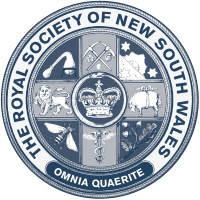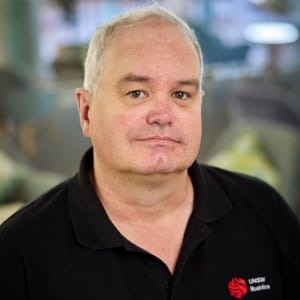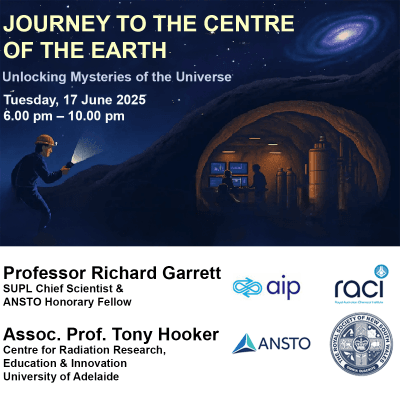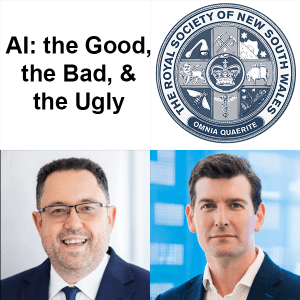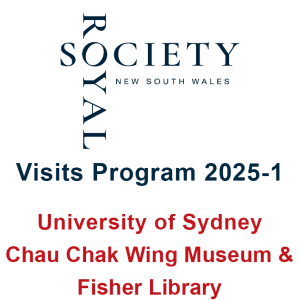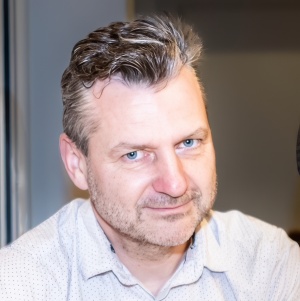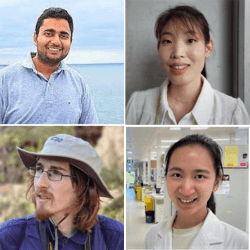
 Royal Society of NSW 2022
Royal Society of NSW 2022
Student Award Presentations
Shankar Dutt, ANU
Clara Liu Chung Ming, UTS
Thomas Mesaglio, UNSW Sydney
Anyang Zhao, ANU
Date: Wednesday, 15 March 2023, 6.30 pm AEDT
Video presentation: YouTube video
All are welcome
The evening’s program comprises four short talks presented by PhD Research Candidates who have been awarded the Society’s Jak Kelly Award and the Royal Society of NSW Scholarships for 2022. Follow the links to read a summary of each presentation and a brief biography of the presenter.
Mr Shankar Dutt (Jak Kelly Award) — Sensing one molecule at a time: A pathway to personalized healthcare and early detection of Alzheimer’s and MS
Miss Clara Liu Chung Ming (Scholarship Winner) — A novel hope for heart-failure patients using bioengineered heart tissues
Mr Thomas Mesaglio (Scholarship Winner) — ‘Say cheese-tree!’ Exploring Australia’s vascular plant photographic record
Miss Anyang Zhao (Scholarship Winner) — The molecular mechanism of Listeria ivanovii-induced inflammasome activation
Presentation Summaries and Brief Biographies of the Presenters
 Sensing one molecule at a time: A pathway to personalized healthcare and early detection of Alzheimer’s and MS
Sensing one molecule at a time: A pathway to personalized healthcare and early detection of Alzheimer’s and MS
Mr Shankar Dutt, PhD Candidate, Australian National University
Nearly one in twenty people worldwide suffer from neurological diseases. Early detection is crucial for these diseases because timely intervention can halt the progression of the condition and stop it from worsening. Early detection, however, relies on ultrasensitive biomarker detection, which is not possible with conventional diagnostic techniques. Neurodegenerative diseases can be detected by the presence or elevated levels of specific biomarkers in blood. The ability to identify single molecules reliably, swiftly, quantitatively, and affordably would thus offer up exciting new opportunities for a variety of biomedical applications. We are investigating a unique nanopore-based sensing platform allowing reliable and highly sensitive detection and identification of different biomolecules in complex solutions. This platform employs scalable and controllable methods to fabricate silicon nitride membranes with effective thickness down to ~1.5 nm. Ultra-stable nanopores exhibiting high lifetime are fabricated in these membranes using controlled breakdown technique and track-etch technology. By adjusting the membrane composition as well as the nanopore structure, the translocation kinetics of the biomolecules can be tailored. Using this platform, we have demonstrated the detection of a number of isolated analytes, including DNA, proteins, and antibodies. We combine the novel nanopore sensor with artificial intelligence-based single-molecule identification algorithms with an aim to use the platform for the early diagnosis of neurodegenerative disorders. Artificial intelligence and on-the-fly data processing integrated with our novel nanopore platform may allow for the precise identification and measurement of the many biomarkers present in blood serum as well as ‘real-time’ diagnosis of Alzheimer’s and Multiple Sclerosis.
Shankar Dutt is a doctoral student at the Research School of Physics, Australian National University. His research interests are focussed on the fabrication and applications of extremely small nanopores of controllable shape and size in a variety of materials. Combining his technology with 2D materials and ultra-thin film deposition enables the fabrication of nanopore membranes with desired functions that can be used in medical and biological sensors, ultrafiltration, and lab-on-a-chip applications. He also has strong expertise in material modification through high-energy ion beams and characterisation using synchrotron-based small-angle X-ray scattering. Shankar received his B.Sc. and M.Sc. in Physics from India, where he was awarded University gold medals for both courses. During his undergraduate degree, he also worked at the ENSTA-Ecole Polytechnique in France. He was awarded an Australian Government Research Training Program Scholarship as well as the AINSE Postgraduate Research Award for his doctoral studies at the ANU. Shankar has published several articles in world-leading journals and has applied for two patents. He has obtained funding from NVIDIA, Google, DAAD, ANSTO and ANU Connect Ventures, including a Discovery Translation Fund to explore commercialisation activities based on his inventions.
 A novel hope for heart failure patients using bioengineered heart tissues
A novel hope for heart failure patients using bioengineered heart tissues
Ms Clara Liu Chung Ming, PhD Candidate, University of Technology Sydney
Cardiovascular disease (CVD) is the leading cause of death worldwide. Our lab has developed new ways to 3D bioengineer human heart tissues using patient-derived stem cells, which we called “cardiac spheroids”. Cardiac spheroids better mimic the human heart microenvironment compared to pre-existing ones and replicate the human heart pathophysiology, in what we call the “heart attack-in-a-Petri-dish”, as well as cardiac fibrosis and drug-induced myocardial damage. Thanks to our studies using cardiac spheroids, we have identified a potential new way to treat a damaged heart. In my main project, I study the regenerative effects of acetylcholine (a neurochemical present in the human body) on the damaged heart following either a heart attack or the drug-induced myocardial damage. So far, I have demonstrated that acetylcholine attenuates cell death, the reduction in contractility, as well as changes in molecules that characterise a failing heart. These studies would not be possible without the use of the cardiac spheroids we have developed. Current and future studies are focussing on translating these novel findings from the bench to the bedside to help patients that present a damaged heart with their recovery, as well as to prevent serious complications, including death. More recently, Clara’s research has focused also on the effects of Sars-CoV-2 on human heart pathophysiology, as well as the bioengineering of pre-eclampsia-induced heart failure using patient-derived stem cells. We are reprogramming their blood cells to stem cells and then to cardiac cells, to look at how preeclampsia can lead to CVD as current in vivo models can’t fully replicate preeclampsia.
Clara Liu Chung Ming is a PhD candidate in the School of Biomedical Engineering at the University of Technology Sydney (UTS) under the supervision of Dr Carmine Gentile. Clara undertook her Bachelor studies at The University of Melbourne majoring in Neuroscience (2018) and her Master of Philosophy in Medical Biotechnology at UTS in 2020.
Her current research focusses on the bioengineering of advanced 3D in vitro models of human heart pathophysiology, including “the-heart attack-in-a-Petri-dish” and heart failure using patient derived-stem cells. Thanks to her technology, Clara has demonstrated that acetylcholine (a natural compound produced by our body) can protect against myocardial infarction (heart attack) and drug-induced heart failure. She is now working on translating her laboratory studies to the clinic in collaboration with other scientists and clinicians at the University of Sydney, Charles Perkins Centre, Sydney Heart Bank, Royal Prince Alfred Hospital and Baker Heart and Diabetes Institute and Monash University. Despite her early career, Clara has already received several previous awards for her novel studies, including: i) Australian Government Research Training Program Stipend (2021), ii) UTS FEIT HDR Women in Engineering and IT awards (2021), iii) ASBTE Rapid Fire Presentation Award (2022); and iv) NSW Education Waratah Scholarship (2022).
 ‘Say cheese-tree!’ Exploring Australia’s vascular plant photographic record
‘Say cheese-tree!’ Exploring Australia’s vascular plant photographic record
Mr Thomas Mesaglio, PhD Candidate, UNSW Sydney
In the world of biodiversity data, physical specimens remain the gold standard, allowing for microscopic examination and DNA extraction among many benefits. However, there is increasing recognition of the value of photographs for documenting difficult-to-collect taxa, such as tall trees or spiny plants. Photographs also offer a wealth of information that is absent or lost from physical specimens, such as flower colour or growth habit, and are valuable tools for identification keys, field guides, conservation, and research. Based on a comprehensive survey of 33 major online photographic databases, almost 18% of Australia’s ~21,000 native vascular plant species do not have an easily accessible field photograph. Southeastern Australia is relatively well-documented, whilst Western Australia, the Northern Territory and Queensland have thousands of unphotographed plants. A complex mix of factors relating to taxonomy, geography and morphology drive these patterns.
Thomas Mesaglio is a PhD candidate at UNSW Sydney working on our understanding of Australian plants and how to improve this knowledge. He is a curator and forum moderator on the global biodiversity citizen science platform iNaturalist, and has contributed more than 237,000 identifications and 40,000 observations to the site. Although much of his research involves analyses of citizen science data, Thomas has published research across a wide range of disciplines, including marine forensics, bushfire recovery and invertebrate ecology. As part of the Environment Recovery Project team, Thomas received the Department of Industry, Science and Resources’ 2022 Eureka Prize for Innovation in Citizen Science.
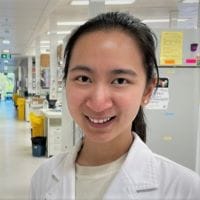 The molecular mechanism of Listeria ivanovii-induced inflammasome activation
The molecular mechanism of Listeria ivanovii-induced inflammasome activation
Ms Anyang Zhao, PhD Candidate, Australian National University
Listeria ivanovii is a pathogenic gram-positive bacterium that causes listeriosis, a type of gastroenteritis that can lead to abortion and sepsis in humans and animals. However, the interaction between L. ivanovii and the host immune defence system is under-studied, making it known as one of the neglected pathogens. I have identified L. ivanovii as a novel activator of the inflammasome, which is a cytosolic innate immune signalling complex that induces inflammation and mediates the killing of bacteria. In addition, I have shown that L. ivanovii specifically activates the DNA-sensing AIM2 inflammasome in mouse macrophages. Mechanistically, L. ivanovii requires phagocytosis to mediate entry into macrophages, followed by their escape from the phagosome into the cytoplasm to induce inflammasome activation. Lastly, I found that AIM2 inflammasome activation promotes L. ivanovii-induced lethality in mice.
My findings provide insights into the molecular mechanisms by which L. ivanovii infection is recognised by the AIM2 inflammasome. These findings also suggest the potential physiological role of AIM2 inflammasome in the host defence against L. ivanovii infection in vivo. My study further adds to the fundamental knowledge of host-pathogen interactions between a neglected human and animal pathogen and the mammalian immune system. The understanding of how the innate immune system recognises pathogens may potentially contribute to the development of immunotherapy and vaccines against emerging and neglected pathogens.
Anyang Zhao graduated with the Bachelor of Philosophy – Science degree at the Australian National University with a GPA of 6.815 out of 7. In 2021, she completed her Honours Research year in the John Curtin School of Medical Research with an Honours mark of 93 out of 100, and achieved the top mark for her Honours cohort. Her excellent academic scores led her to win the Fenner Merit Scholarship in Medical Sciences, which is awarded to the highest-ranked international student applicant intending to pursue postgraduate research studies at the John Curtin School of Medical Research. Despite her early career stage, Anyang has already published a preview article in Cell Host & Microbe (2022) as a co-first author and has further co-authored two primary research articles published in Science Immunology (2022) and Nature Communications (2022), all during the first year of her PhD studies. Anyang’s achievements were further recognised by The Gretel and Gordon Bootes Medical Research Foundation, where she received funding worth $11,578 as a co-investigator. In addition, Anyang is passionate about sharing her research with the wider community and has participated in several public speaking activities. She recently won the second prize in the 2022 Canberra Hospital Foundation Award for the Canberra Health Annual Research Meeting (CHARM) 3-Minute Thesis Competition. This illustrates her ability to communicate her research with the general public — an incredibly important skill for medical researchers.
